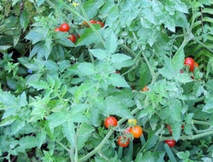
By Linda Gordon
IF YOU are in the habit of singing to your plants, you’d better make sure you’re in tune. It turns out they can hear you and they are more than somewhat sensitive.
IF YOU are in the habit of singing to your plants, you’d better make sure you’re in tune. It turns out they can hear you and they are more than somewhat sensitive.
Researchers at universities in Europe and the US have been testing plants’ hearing, using recordings of a caterpillar chomping leaves and the sound of water running through a pipe.
A chemical ecologist at the University of Missouri noted that the sound of a bug chomping a leaf set off a defensive, chemical reaction in the untouched plant that was “hearing” the sound.
At the International Laboratory of Plant Neurobiology in Italy, researchers discovered plants would seek out a buried pipe, through which water was flowing, even if the outside of the pipe was bone dry. Conclusion: plants could hear the water flowing in the pipe.
Some plant neurobiologists are pretty excited about recent discoveries, which point to plants behaving as if they had a “brain”, while others see plants’ sophisticated interactions with their environment as clever ways to compensate for being rooted to the spot.
Either way, it’s a wonderful notion for a gardener to entertain: my garden plants are much smarter and more independent and resourceful than I could have imagined.
Armed with this information, I conducted a small-scale experiment in my Wonthaggi backyard, over summer.
I let a clutch of self-sown, tall tomatoes have their way. No support, no fuss, do what you like, chaps.
For organisms rooted to the ground, they sure moved. Up and over a trellis they happened across that was resting against the fence, up an apricot tree and two sturdy amaranth stalks, around the feijoa and, cleverly, they buddied up with a baby blood orange, getting plenty of water through February.
Where I would once have looked at this lot and thought I’d been a neglectful gardener, I now look with awe and respect at the tomatoes’ determination to use everything in their environment to ensure they thrive.
It’s comforting to know that if we all disappear from our gardens tomorrow (or in the not-too-distant future), the plants will not only survive but they will be around to teach the next lot.
If you would like to know more about plant neurobiology research, check out Michael Pollan’s article, The Intelligent Plant: A radical way of understanding flora, which appeared in The New Yorker, of December 23-30, 2013.
A chemical ecologist at the University of Missouri noted that the sound of a bug chomping a leaf set off a defensive, chemical reaction in the untouched plant that was “hearing” the sound.
At the International Laboratory of Plant Neurobiology in Italy, researchers discovered plants would seek out a buried pipe, through which water was flowing, even if the outside of the pipe was bone dry. Conclusion: plants could hear the water flowing in the pipe.
Some plant neurobiologists are pretty excited about recent discoveries, which point to plants behaving as if they had a “brain”, while others see plants’ sophisticated interactions with their environment as clever ways to compensate for being rooted to the spot.
Either way, it’s a wonderful notion for a gardener to entertain: my garden plants are much smarter and more independent and resourceful than I could have imagined.
Armed with this information, I conducted a small-scale experiment in my Wonthaggi backyard, over summer.
I let a clutch of self-sown, tall tomatoes have their way. No support, no fuss, do what you like, chaps.
For organisms rooted to the ground, they sure moved. Up and over a trellis they happened across that was resting against the fence, up an apricot tree and two sturdy amaranth stalks, around the feijoa and, cleverly, they buddied up with a baby blood orange, getting plenty of water through February.
Where I would once have looked at this lot and thought I’d been a neglectful gardener, I now look with awe and respect at the tomatoes’ determination to use everything in their environment to ensure they thrive.
It’s comforting to know that if we all disappear from our gardens tomorrow (or in the not-too-distant future), the plants will not only survive but they will be around to teach the next lot.
If you would like to know more about plant neurobiology research, check out Michael Pollan’s article, The Intelligent Plant: A radical way of understanding flora, which appeared in The New Yorker, of December 23-30, 2013.